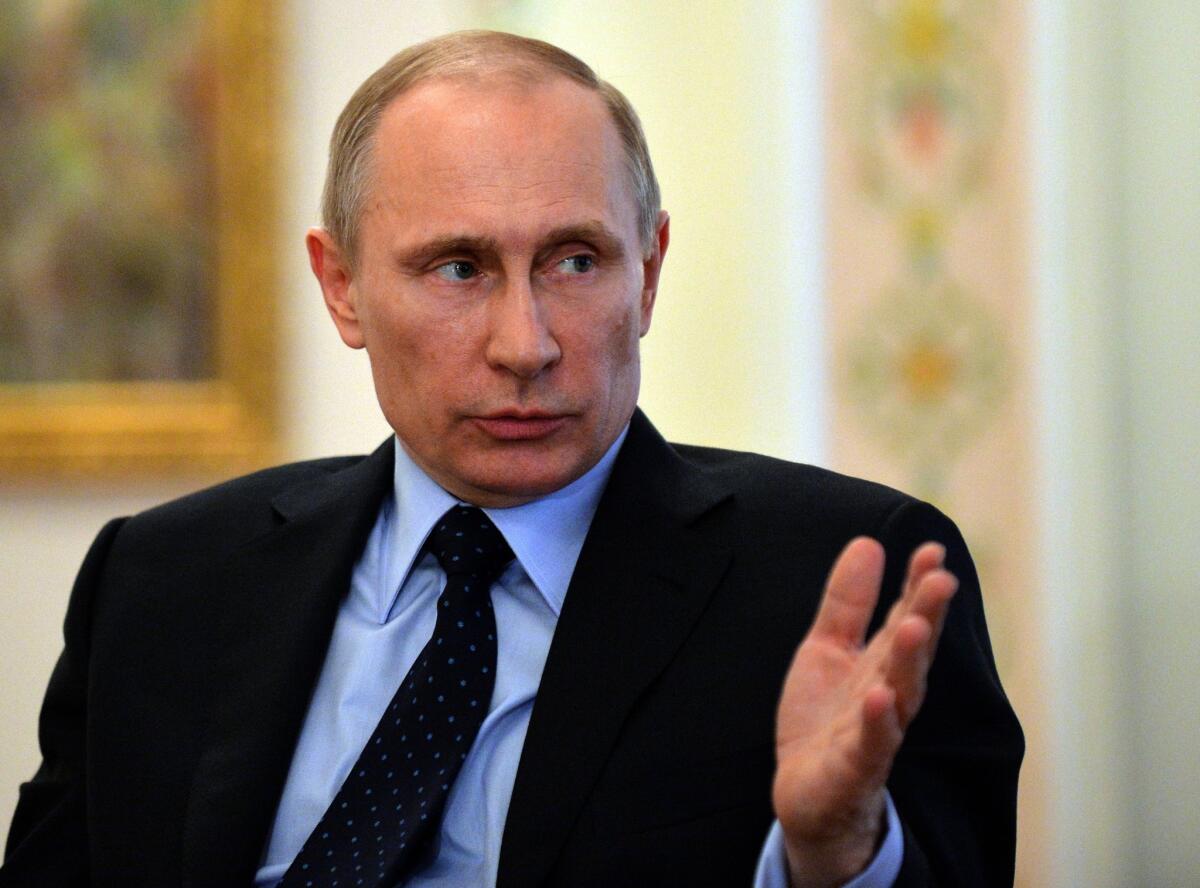How the West is losing Ukraine

- Share via
There are heated debates here and abroad about what exact policies should be put in place in response to Russian President Vladimir Putin’s decision to violate Ukraine’s sovereignty and territorial integrity by sending Russian troops to Crimea. And although that debate is obviously important, we shouldn’t ignore the lessons from the past that brought us to this point and, in turn, should help guide policies going forward.
The first is that Putin paid no price for the Russian invasion of Georgia in 2008. And he has paid no price for the virtual annexation of the Georgian provinces of South Ossetia and Abkhazia.
Nearly one-fifth of Georgia still sits under Russian occupation, and the Russian military set up permanent bases in violation of the cease-fire agreement. But Western capitals, including Washington, have acted as though there was never an invasion of a fellow democracy at all.
PHOTOS: A peek inside 5 doomed dictators’ opulent lifestyles
In short, why wouldn’t Putin think slicing off part of Ukraine was a relatively cost-free exercise?
The second lesson is that, as important as the European Union’s “soft” power tools of trade and diplomacy have been in helping stabilize Central and Eastern Europe in the post-Cold War era, that has been accomplished in conjunction with, and more often than not in the wake of, the “hard” security guarantees provided by NATO expansion.
Arguably, the current crisis had its start with the EU offering a free-trade agreement with Ukraine, which Kiev was about to sign until Moscow stepped in with billions to buy off the government and its officials. This is not to say that the EU’s wooing of Ukraine was wrong; quite the opposite. But it is a useful reminder that efforts to create a Europe “whole and free” absent the assistance of the transatlantic alliance is a far iffier proposition.
To paraphrase Josef Stalin’s famous remark to Winston Churchill when the British prime minister cautioned the Soviet leader about not ignoring the Vatican when it came to the postwar settlement of Eastern Europe, “How many divisions does Brussels have?”
The third lesson is that there is no getting around the character of the Putin government in trying to “reset” relations. President Obama came into office wanting to focus on domestic affairs. This meant not only ending the wars America was in but also creating a less troublesome set of relations with China and Russia.
The president and his advisors hoped there would be a sufficient number of overlapping interests so that other disagreements could be put aside, even if not solved. However, the problem with this strategy has always been that whatever common interests there might be — for example, in reaching an arms control agreement — the greater and overriding priority for Putin was always reclaiming Russia’s great-power status. In other words, Washington and Moscow were never truly on the same page when it came to the reset of U.S.-Russian relations.
And, finally, Washington has let its budget hopes drive its strategic decisions. In January 2012, the Pentagon, at the White House’s direction, issued a new strategic policy guidance that famously announced the military’s “pivot” to Asia. What drove it was the administration’s desire to put forward a new global strategy that would square with existing and pending cuts in defense spending.
But this new guidance depended on two assumptions: that there would be declining involvement in the Middle East, and that Europe was now a continent devoid of strategic competition.
Whether the former assumption can be maintained is an open question, given the chaos in Syria and Iran’s hegemonic designs, but certainly for our treaty allies in Latvia, Estonia, Lithuania and Poland, the latter holds no water — indeed, if it ever did.
No doubt in the days ahead there will be proposals to revoke Russian visas, freeze assets, recall ambassadors, cancel the Group of 8 meeting in Sochi and, generally, isolate Putin diplomatically. And there will be calls to provide economic and military assistance to Ukraine so that it can halt the salami slicing of its territory. All steps that should be taken.
Over the longer term, those measures will be insufficient if the larger lessons of the past are not understood and made to underpin the strategies the U.S. adopts toward Ukraine and Russia.
There will be no peace for Ukraine until and unless Putin sees the cost for his behavior as being greater than the rewards, and there will be no permanent stability in Eastern Europe absent NATO expansion. And neither of those can occur until the U.S. puts aside the idea that the Russian government is just like any other government and accepts the fact that, in the absence of a strong American military presence, its competitors and adversaries will fill that vacuum.
Gary Schmitt is director of the American Enterprise Institute’s Marilyn Ware Center for Security Studies.
More to Read
A cure for the common opinion
Get thought-provoking perspectives with our weekly newsletter.
You may occasionally receive promotional content from the Los Angeles Times.










